Budgies – the UK’s Favourite Pet Bird
We’ve taken an in-depth look into what budgies like to eat in The Ultimate Guide to Feeding Budgies, Canaries and Finches, but there is so much more to these little birds than just what they eat.
Budgies – also known as Parakeets – are the most popular companion bird in the UK and it is easy to see why. These colourful little birds are every bit as intelligent as their bigger cousins, but at just seven or so inches in height, they take up much less room than an African Grey or a Hyacinth Macaw.
There are more than 40 varieties of Budgie with different markings and colours. Breeders use these differences to classify the different types with names such as Blackface, Opaline, Spangle, Albino, Lutino, Fallow and Cinnamon.
Green and yellow Budgies, which most closely resemble their wild counterparts, are called normal Budgies.
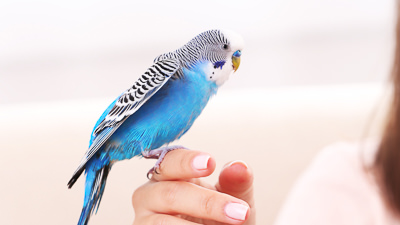
Great Companions for Children
Because Budgies generally involve less maintenance and require less space than larger parrots, they have often been regarded as great companions for children or those who are new to keeping birds.
Of course, because they are smaller, they are also a bit more delicate, so children should be supervised when handling their bird at first, until they learn how to do it properly.
Caring for a Parakeet will also teach children about livestock husbandry and how to care for and treat animals generally. But there is another reason why Budgies make good first birds as well, and to put it bluntly, that is lifespan.
How Long do Budgies Live?
How long do Budgies live is a question we get asked a lot by first time owners. This is important because parrots as a group are the most long-lived order of birds and some of the larger varieties can live up to 75 years. In fact, there have even been instances where Hyacinth Macaws have made it into triple figures, which is more than a lifetime of commitment.
Budgies, on the other hand, tend to live between 5 and 10 years in a domestic setting, which is far more manageable and much less of a commitment. This is an important consideration when buying a bird, as you don’t want to get something that will be with you for 50 years or more if you’re not sure if bird keeping is for you.
How to Tame Your Budgie
Budgies are naturally skittish birds and can be nervous, and whereas taming them sounds like a draconian process, we really mean allowing your bird to adjust to its surroundings.
When you get your new bird, allow it a couple of weeks to settle in before you do too much with it. Let your new companion locate its food and water bowls and get use to its enclosure. Put their enclosure in a room that is regularly used so the bird gets used to people coming and going and all the hustle and bustle of everyday life. Over a few days or doing this, your Budgie will settle in and start to view people as companions rather than threats, which is essential for a close and lasting bond.
At this point, you can start to engage more with your new friend and even teach him or her their name. Budgies are clever birds that will soon learn to respond to their name when called. To do this, simply say your bird’s name and then reward them with a tasty piece of fruit. Repeat this several times, and you’ll find your bird will learn their name in no time.
How Budgies Show Affection
Parakeets are social birds and can be very affectionate towards humans if socialised correctly. Therefore, engaging with your bird every day from an early age is essential to build up a trusting bond.
Once this is established, your Budgie will show affection by brightly chirping at you in a friendly tone and engaging physically with you. This might be using your finger as a perch or climbing on to your shoulder and gently pecking at your ears and hair. In fact, gentle mouthing by your bird is a sure sign he or she likes you. Other body language, such as tail wagging and wing flapping as you approach shows your bird is excited to see you.
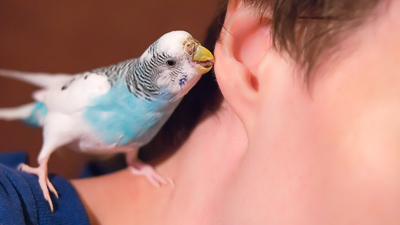
You can return the favour by lightly stroking your Budgie around the head and neck, avoiding the eyes, obviously. However, it is important to monitor the bird’s response because not all of them like to be touched. Unlike cats and dogs, who spend a lot of time snuggled up to their mother when very young, birds never have this degree of contact. So, whereas some birds do quickly get used to it and enjoy it, others do not, and it is important not to persist if your bird shows signs of discomfort or fear.
Exercising Your Budgie
Once your Budgie has acclimatised to its surroundings and to people, allowing them time to fly freely will help them to exercise and allow them to exhibit their natural behaviour.
If your birds are kept in a large aviary, they will do this naturally, but if you have a single bird in a cage, then letting them out to fly around the house every day will be great exercise.
However, when you do this, there are a few tips you should follow. Keep other companion animals out of the room, shut all windows and doors, turn off any fans in the room and close any blinds you have to ensure your Budgie cannot get tangled up.
Can Budgies Talk?
Finally, one of the most popular questions we get asked is can Budgies talk. The answer is absolutely, in fact they make great talking birds. One famous Budgie even managed to master more than 1,700 words across its lifetime, making it the world’s most well-spoken bird!
Male birds tend to be easier to train than females and younger birds can pick up new words and phrases quickly.
Budgies learn to talk by mimicking humans. But to do this, they must see humans as part of their flock, so it is essential to bond with them before starting to teach them.
Use an enthusiastic tone and repeat simple words and phrases to your Budgie until they begin to try to say them back. It is important to reward you bird for its efforts with praise and even treats, however don’t overdo it on the treats.
Your Budgie should soon pick up some simple words and phrases, and once they are in the habit of this, will naturally start to mimic other people in the house and expand their vocabulary.
For a more in depth look at how to train your Budgie, or any other parrot to talk, check out our blog Talking Parrots – What You Need To Know To Get Started
Our Recent Posts Giving Advice and Guidance on Aviary Birds
What’s Not to Love About the Colourful Lovebird?
Reading Time: 12 minutes Sometimes referred to as ‘pocket parrots’ due to their size, they are colourful, charming characters that can make adorable pets. With a name like Lovebird, it’s not surprising these are among the most popular small parrots to own.
How to Tame (Train!) Your Budgie
Reading Time: 10 minutes One question we get asked fairly often is how to tame a Budgie. We’ve always found this a bit of a strange enquiry because like most birds that live in flocks in the wild, Budgies are very sociable and enjoy human company. As such, they don’t need to be tamed per se.
Budgies – the UK’s Favourite Pet Bird
Reading Time: 6 minutes Budgies – also known as parakeets – are the most popular companion bird in the UK and it is easy to see why. These colourful little birds are every bit as intelligent as their bigger cousins, but at just seven or so inches in height, they take up much less room than an African Grey or ...








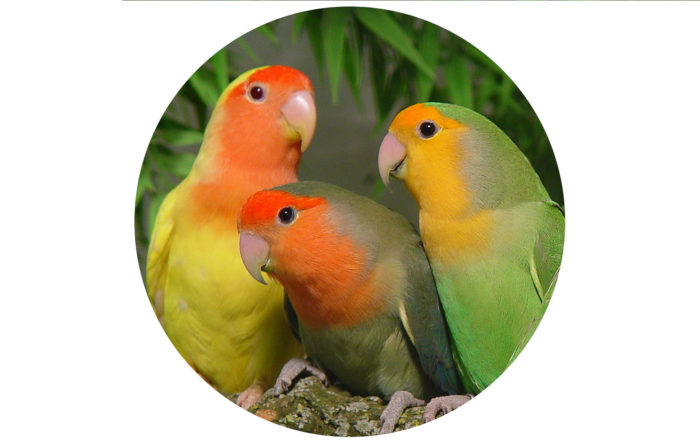
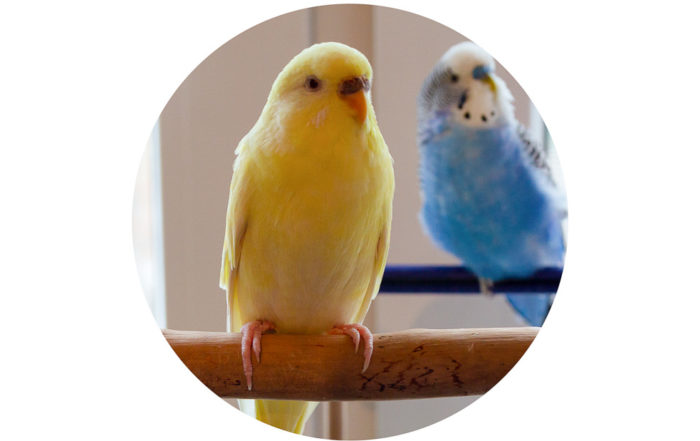
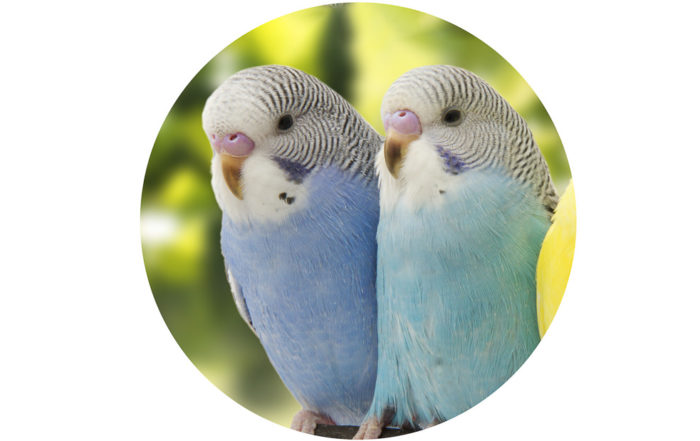
Leave A Comment